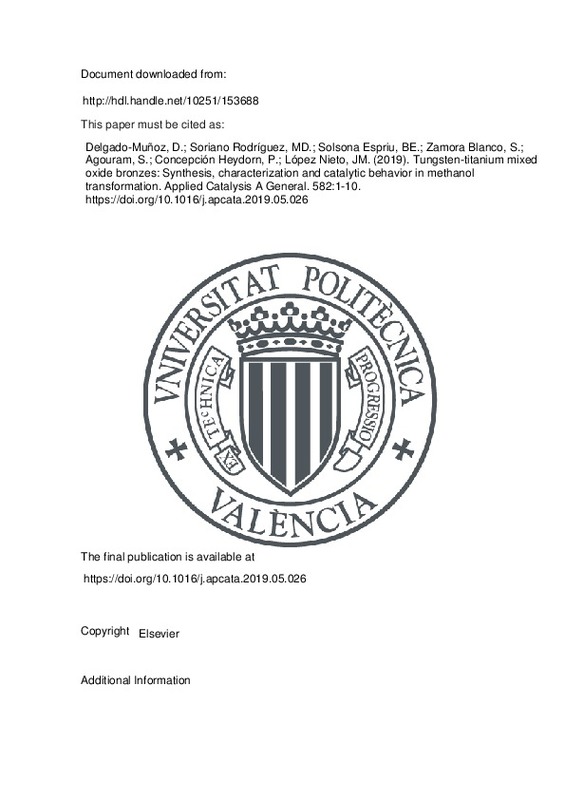JavaScript is disabled for your browser. Some features of this site may not work without it.
Buscar en RiuNet
Listar
Mi cuenta
Estadísticas
Ayuda RiuNet
Admin. UPV
Tungsten-titanium mixed oxide bronzes: Synthesis, characterization and catalytic behavior in methanol transformation
Mostrar el registro completo del ítem
Delgado-Muñoz, D.; Soriano Rodríguez, MD.; Solsona Espriu, BE.; Zamora Blanco, S.; Agouram, S.; Concepción Heydorn, P.; López Nieto, JM. (2019). Tungsten-titanium mixed oxide bronzes: Synthesis, characterization and catalytic behavior in methanol transformation. Applied Catalysis A General. 582:1-10. https://doi.org/10.1016/j.apcata.2019.05.026
Por favor, use este identificador para citar o enlazar este ítem: http://hdl.handle.net/10251/153688
Ficheros en el ítem
Metadatos del ítem
| Título: | Tungsten-titanium mixed oxide bronzes: Synthesis, characterization and catalytic behavior in methanol transformation | |
| Autor: | Delgado-Muñoz, Daniel Solsona Espriu, Benjamín Eduardo Zamora Blanco, Segundo Agouram, Said | |
| Entidad UPV: |
|
|
| Fecha difusión: |
|
|
| Resumen: |
[EN] Tungsten oxide bronze-based materials show extremely adaptive structural and compositional features that make them suitable for functional properties modulation. Herein we report the preparation of a series of ...[+]
|
|
| Palabras clave: |
|
|
| Derechos de uso: | Reserva de todos los derechos | |
| Fuente: |
|
|
| DOI: |
|
|
| Editorial: |
|
|
| Versión del editor: | https://doi.org/10.1016/j.apcata.2019.05.026 | |
| Código del Proyecto: |
|
|
| Agradecimientos: |
Authors would like to thank DGICYT in Spain for RTI2018-099668-B-C21, CTQ2015-68951-C3-1-R and MAT2017-84118-C2-1-R projects. Authors from ITQ also thank Project SEV-2016-0683 for supporting this research. D.D. thanks ...[+]
|
|
| Tipo: |
|







![[Cerrado]](/themes/UPV/images/candado.png)


